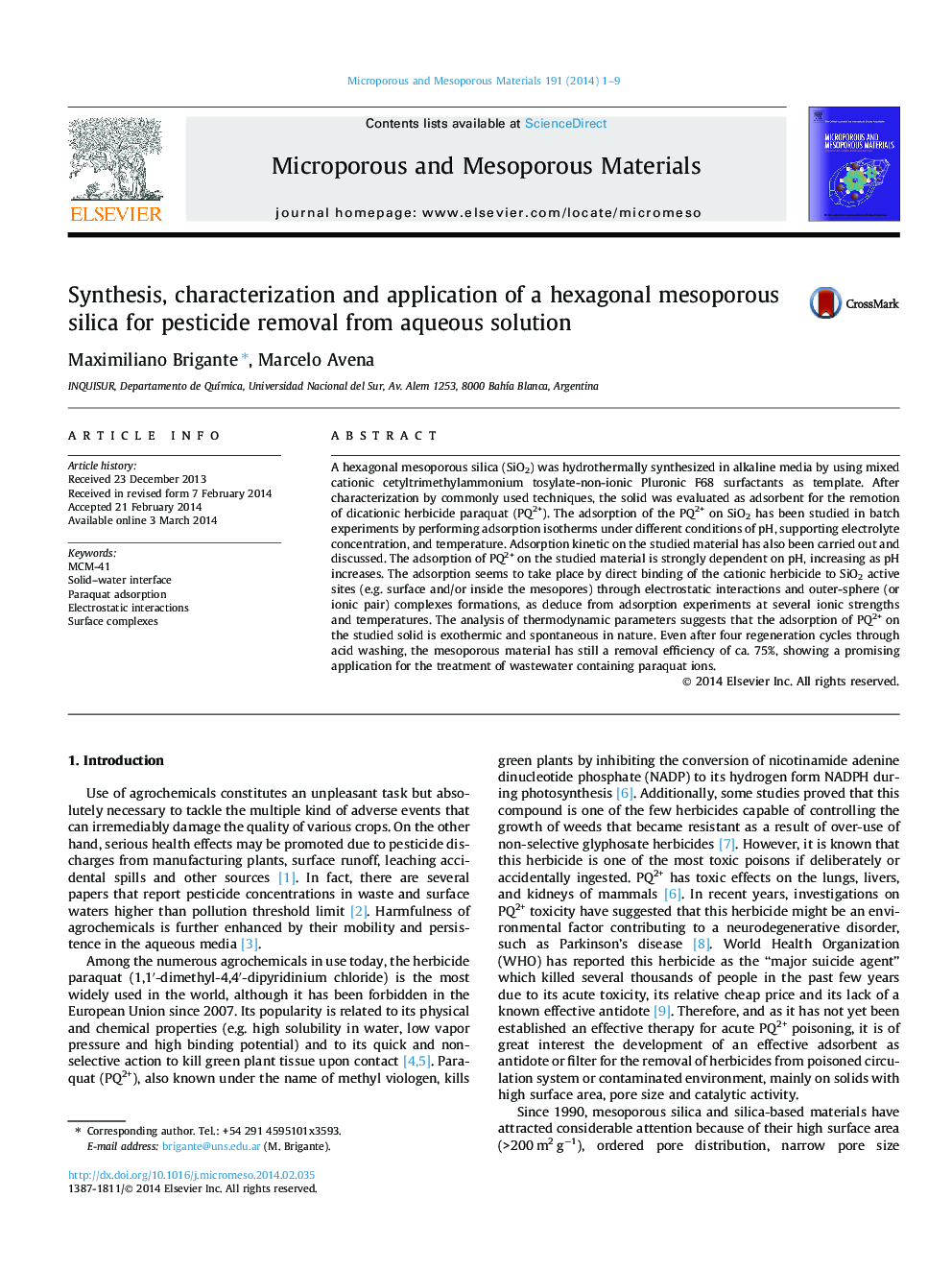| Article ID | Journal | Published Year | Pages | File Type |
|---|---|---|---|---|
| 73131 | Microporous and Mesoporous Materials | 2014 | 9 Pages |
•Mesoporous silica (SiO2) was synthesized by a dual template.•The synthesized material possessed a hexagonal symmetry like MCM-41.•The solid showed high adsorption capacity and reusability to the herbicide paraquat.•Adsorption mechanism was related to electrostatic interactions and outer-sphere complexes formations.
A hexagonal mesoporous silica (SiO2) was hydrothermally synthesized in alkaline media by using mixed cationic cetyltrimethylammonium tosylate-non-ionic Pluronic F68 surfactants as template. After characterization by commonly used techniques, the solid was evaluated as adsorbent for the remotion of dicationic herbicide paraquat (PQ2+). The adsorption of the PQ2+ on SiO2 has been studied in batch experiments by performing adsorption isotherms under different conditions of pH, supporting electrolyte concentration, and temperature. Adsorption kinetic on the studied material has also been carried out and discussed. The adsorption of PQ2+ on the studied material is strongly dependent on pH, increasing as pH increases. The adsorption seems to take place by direct binding of the cationic herbicide to SiO2 active sites (e.g. surface and/or inside the mesopores) through electrostatic interactions and outer-sphere (or ionic pair) complexes formations, as deduce from adsorption experiments at several ionic strengths and temperatures. The analysis of thermodynamic parameters suggests that the adsorption of PQ2+ on the studied solid is exothermic and spontaneous in nature. Even after four regeneration cycles through acid washing, the mesoporous material has still a removal efficiency of ca. 75%, showing a promising application for the treatment of wastewater containing paraquat ions.
Graphical abstractFigure optionsDownload full-size imageDownload as PowerPoint slide
